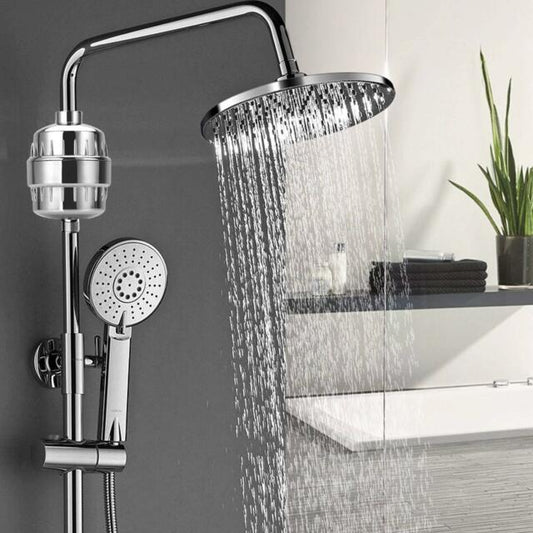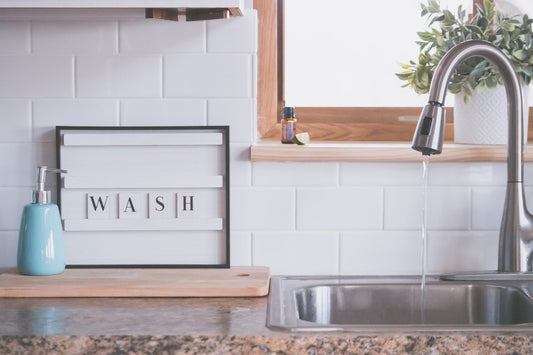What Is Water Softener Salt
Are you buying a water softener for the first time and wondering why you need salt for the system. Well, salt is the main component in a water softener for the cleaning process. Choosing the right salt not only supports the mechanism of the softener but also improves its life. You can extend the life of a high-quality softener for up to 15 to 20 years by using the right salt and proper maintenance.
Because salt is consumable, you need to consistently check the quantity of salt in the tank. If at any point you notice that the salt is not sufficient, you need to add a new batch.
Now you may think that buying water softener salt is as simple as purchasing your table salt. However, this is not necessarily true because of the wide range of options available in the market. These options have some pros and cons that you need to consider. Therefore, if you have a habit of buying low cost stuff with more quantity, consider reading this article.
What is Water Softener Salt?
Water softener salt is an essential component for softening and treating hard water. Hard water is rich in mineral content, which harms the environment, home appliances, and pipes. There are some unproven speculations that it also causes health issues. Water softener salt plays a vital role in removing minerals from hard water, which helps reduce the hardness level. You have to mix the salt with water to form a brine solution, and you can do this by pouring this solution into the brine tank enabling the system to perform the ionization process.
How Water Softener Uses Salt
The brine tank contains resin beads that help with the ion exchange process. Hard water includes calcium and magnesium that increases the hardness level of water. A water softener removes this hardness ion with sodium ions present in the brine.
The beads will store the hardness ions and with time, these beads start to become unsaturated. When the capacity of these beads to hold these ions is full, they stop working. Due to that, the system goes through a regeneration cycle during which the resin beads will swill the salt ions and get rid of the hard ions. Therefore, you need to make sure that there are sufficient sodium ions in the tank for the regeneration task.
Choosing the Right Water Softener Salt
1. Sodium Chloride
There are four forms of sodium chloride suitable for water softeners. These options are widely available because of their effectiveness and lower cost. These options are rock salt, solar salt, salt pellets, and block salt. Let’s take a closer look at each of these forms:
- Rock Salt
Rock salt is a raw form of salt extracted from the ground. It resembles small pebbles or rock. Because of the mining process, this form of salt contains higher level of impurities. If you are using this salt for your system, you need constant maintenance. This generally happens because calcium sulfate does not dissolve in water. Even though this option is less expensive than other salts, you will end up spending more on maintenance.
- Solar Salt
You can refer to this type of salt as sea salt because of the manufacturing process. The purity level of this salt is 99.6%. In addition, this option is highly soluble and easily dissolves in water. So, this is one of the best options for a water softener. Unlike rock salt, solar salt does not leave insoluble components behind. If you are looking for an option that prevents system build-ups and blockage, you should go with solar salt. Using solar salt will enhance the life of your water softener and minimise the need for frequent maintenance.
- Evaporated Salt Pellets
If you want an option with maximum level of purity, evaporated salt is the go-to for your water softening system. However, this salt is comparatively expensive. The production method includes evaporation of moisture from raw salt. The residue of this process is 100% pure sodium chloride. With this level of purity, you can effectively convert hard water into soft water.
- Block Salt
Some people also use block salt for their water softening system but experts do not recommend this option. Manufacturing companies make blocks by mixing salt and bonding agents. These agents are impure and may affect the performance and longevity of the system.
1. Potassium Chloride
You can also use potassium chloride as an alternative to salt. This option is 99.9% sodium-free, which makes it a perfect solution for people who want to reduce sodium intake. That does not mean that potassium is a healthy substitute. Consuming potassium will increase your risk of developing hypertension.
This option is not easily accessible, which is why the prices are higher. If you are okay with switching to potassium, consider increasing the salt dosage up to 10% from the settings. By doing that, your system will regenerate properly.
Tips for Maintaining Brine Tank
Maintaining your brine tank is essential, and there are few things you need to consider. Follow these tips to enhance efficiency while increasing the system’s life:
- When the quantity of salt in the tank is below one-quarter, you need to include more solutions. If you fail to do so, your system will not reduce the hardness level of the water. Keeping this in mind, you need to regularly check the solution level in the tank.
- If you want to increase the efficiency of the system, ensure that your brine tank is three to four inches higher than the water level. However, keep the solution level four inches below the top.
- Before adding fresh brine, remove the encrusted salt from the tank’s wall and make sure that the salt completely dissolves in the water. You can also add hot water to break up the salt blocks.
You can read about our other popular reviews on Culligan, Kinetico, Rayne Water, and waterboss.
Conclusion
Installing a water softener system in your home is a massive investment. Therefore, you need to take proper care of the system with frequent maintenance. Good maintenance requires choosing the right type and amount of salt or potassium. However, the choice of salt depends on your situation. Now that you know the advantages and disadvantages of using each salt option, you can make a well informed decision.






